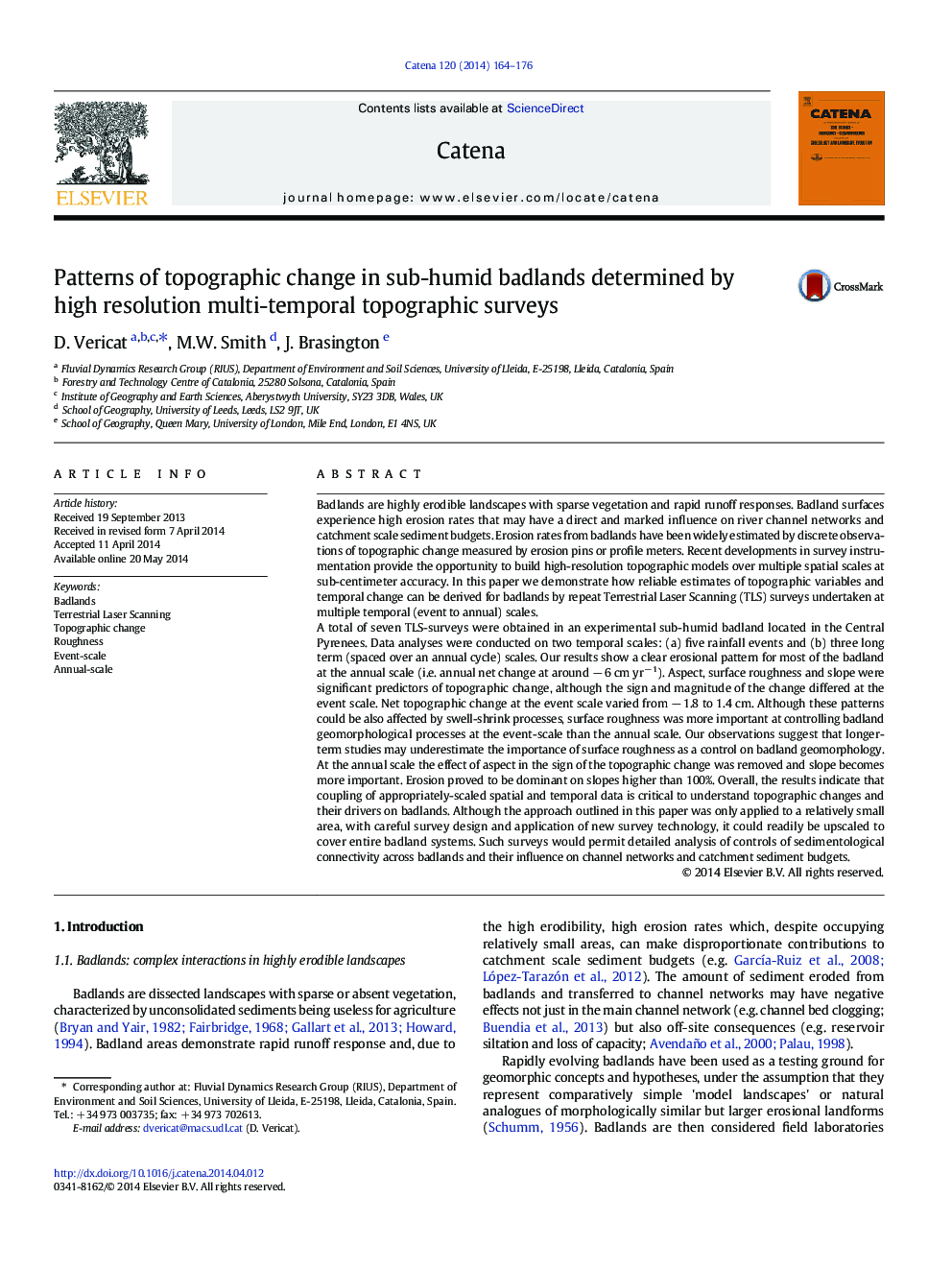| کد مقاله | کد نشریه | سال انتشار | مقاله انگلیسی | نسخه تمام متن |
|---|---|---|---|---|
| 4571433 | 1629232 | 2014 | 13 صفحه PDF | دانلود رایگان |
• We develop and compare topographic models obtained by TLS at multiple temporal and spatial scales.
• Aspect, roughness and slope are key variables controlling topographic change.
• Roughness is a key element when comparing models at the event-scale while slope at the annual scale.
• Spatial and temporal scales are critical to the calculated sediment budgets.
• Our workflow could be easy upscaled to cover entire badland systems.
Badlands are highly erodible landscapes with sparse vegetation and rapid runoff responses. Badland surfaces experience high erosion rates that may have a direct and marked influence on river channel networks and catchment scale sediment budgets. Erosion rates from badlands have been widely estimated by discrete observations of topographic change measured by erosion pins or profile meters. Recent developments in survey instrumentation provide the opportunity to build high-resolution topographic models over multiple spatial scales at sub-centimeter accuracy. In this paper we demonstrate how reliable estimates of topographic variables and temporal change can be derived for badlands by repeat Terrestrial Laser Scanning (TLS) surveys undertaken at multiple temporal (event to annual) scales.A total of seven TLS-surveys were obtained in an experimental sub-humid badland located in the Central Pyrenees. Data analyses were conducted on two temporal scales: (a) five rainfall events and (b) three long term (spaced over an annual cycle) scales. Our results show a clear erosional pattern for most of the badland at the annual scale (i.e. annual net change at around − 6 cm yr− 1). Aspect, surface roughness and slope were significant predictors of topographic change, although the sign and magnitude of the change differed at the event scale. Net topographic change at the event scale varied from − 1.8 to 1.4 cm. Although these patterns could be also affected by swell-shrink processes, surface roughness was more important at controlling badland geomorphological processes at the event-scale than the annual scale. Our observations suggest that longer-term studies may underestimate the importance of surface roughness as a control on badland geomorphology. At the annual scale the effect of aspect in the sign of the topographic change was removed and slope becomes more important. Erosion proved to be dominant on slopes higher than 100%. Overall, the results indicate that coupling of appropriately-scaled spatial and temporal data is critical to understand topographic changes and their drivers on badlands. Although the approach outlined in this paper was only applied to a relatively small area, with careful survey design and application of new survey technology, it could readily be upscaled to cover entire badland systems. Such surveys would permit detailed analysis of controls of sedimentological connectivity across badlands and their influence on channel networks and catchment sediment budgets.
Journal: CATENA - Volume 120, September 2014, Pages 164–176
